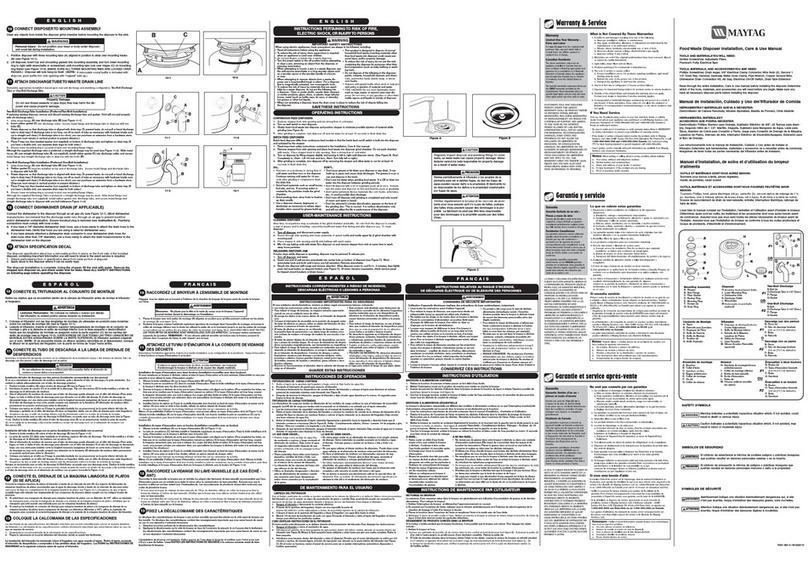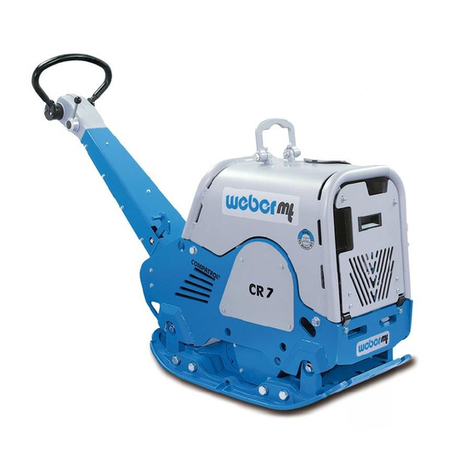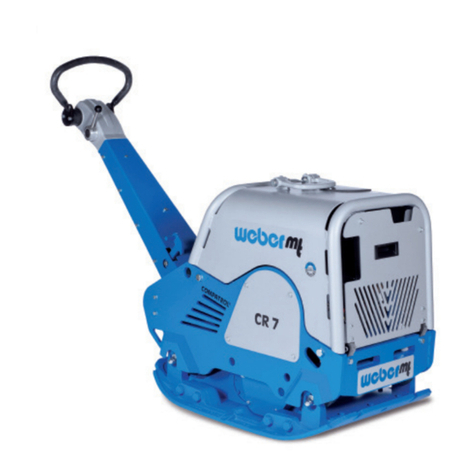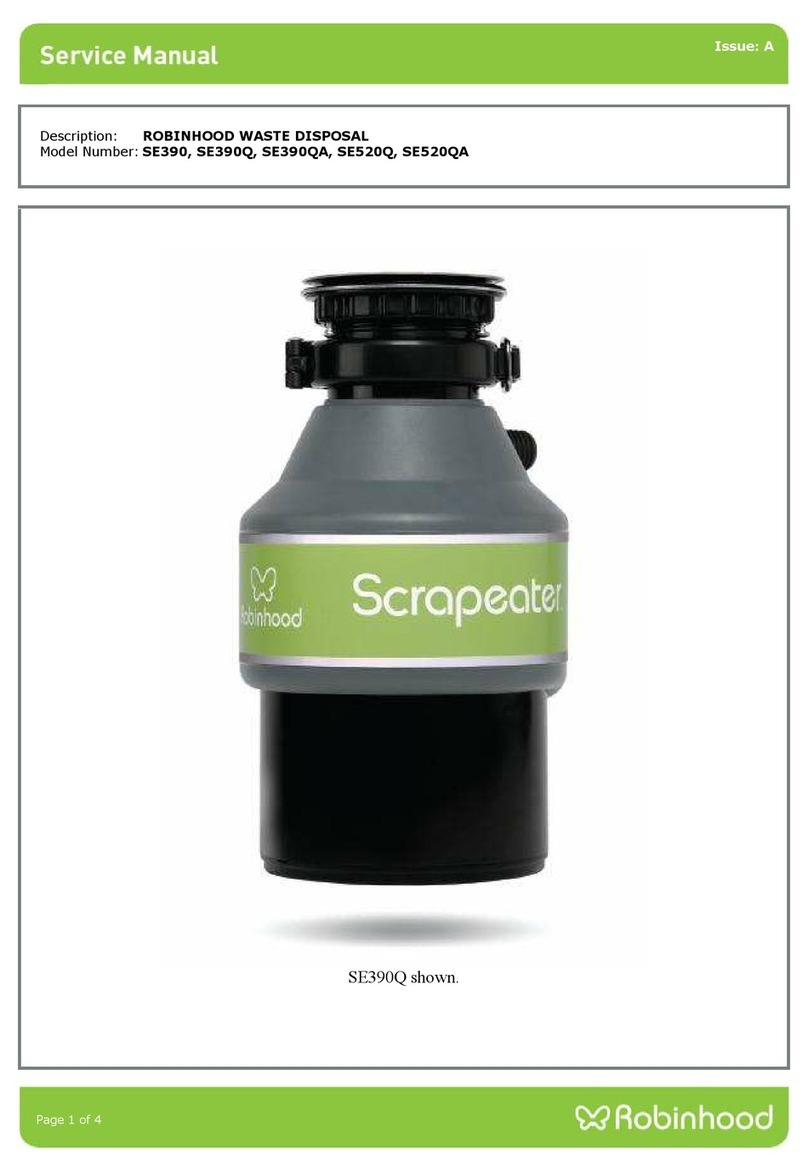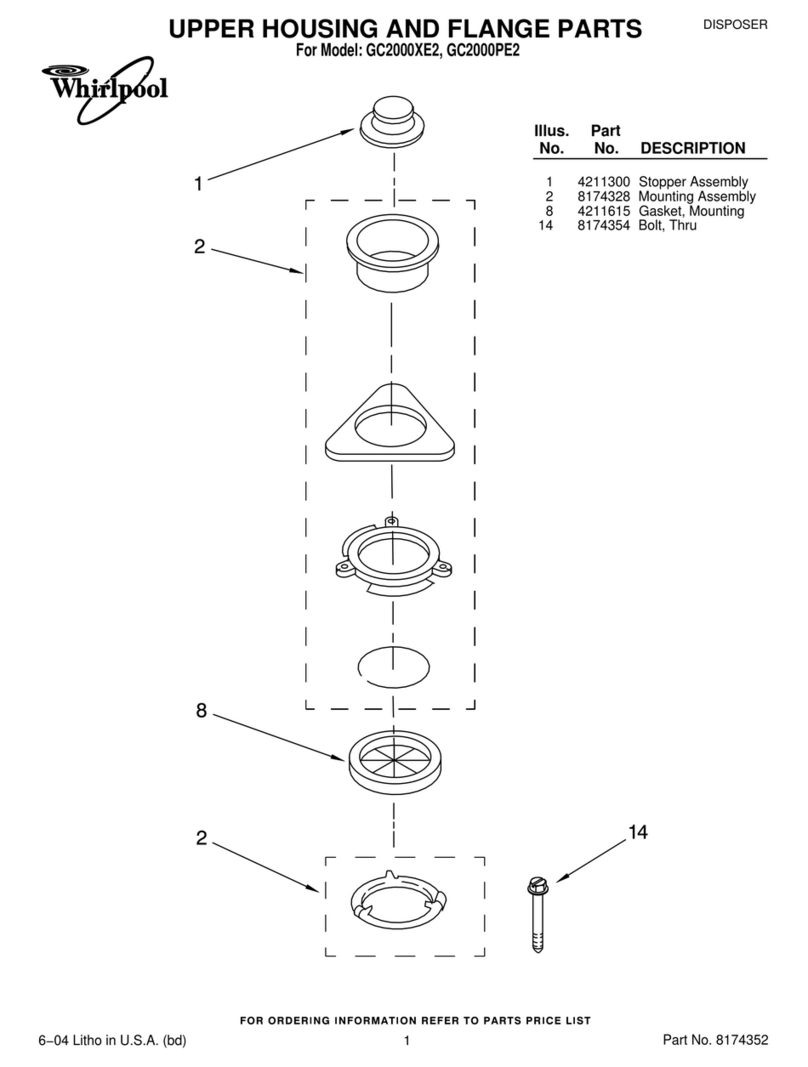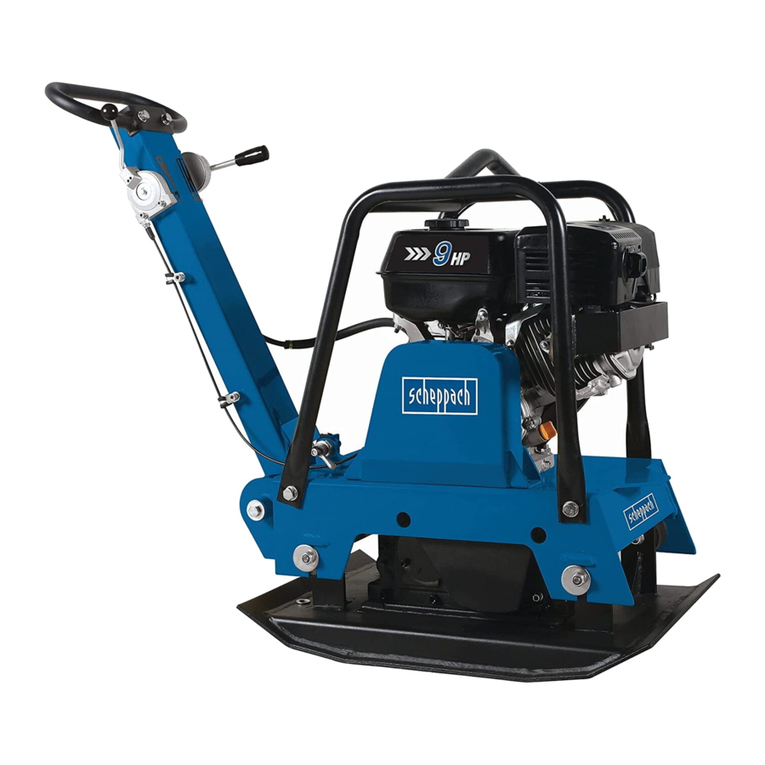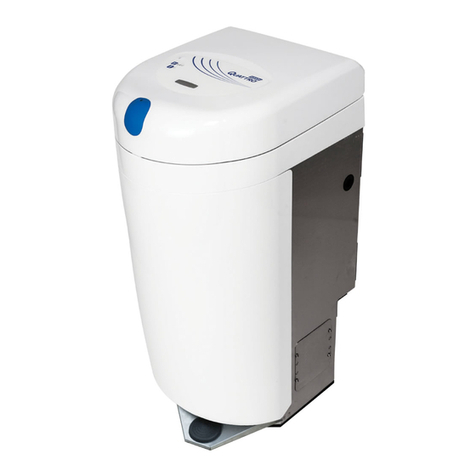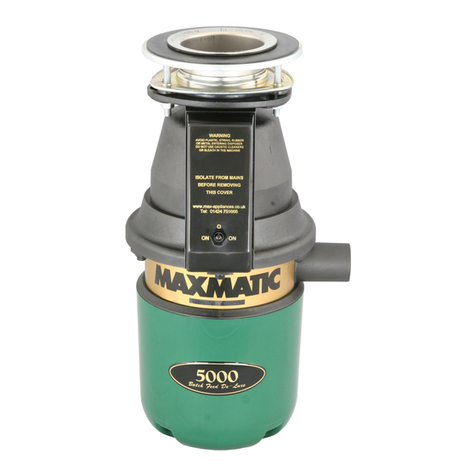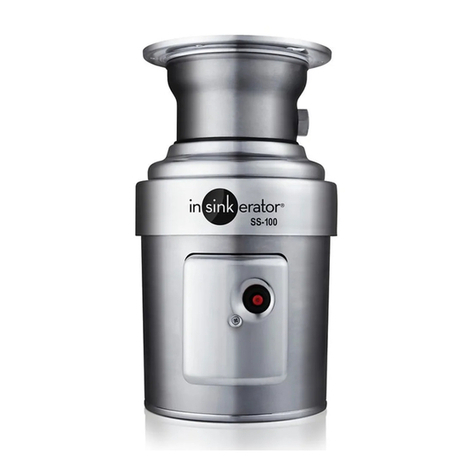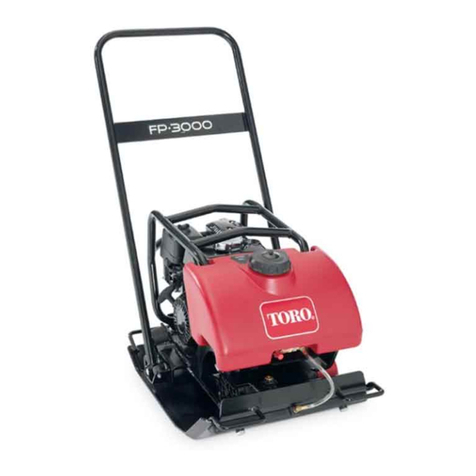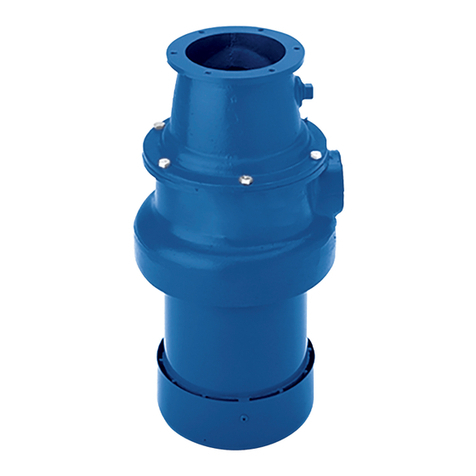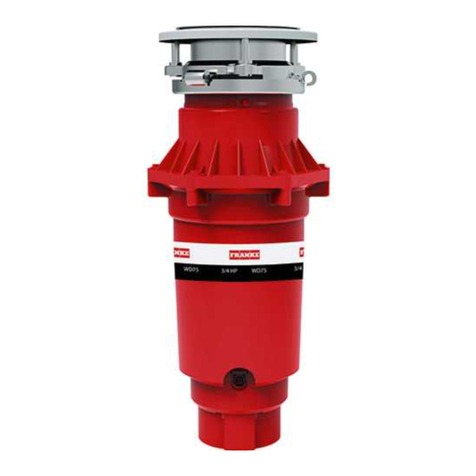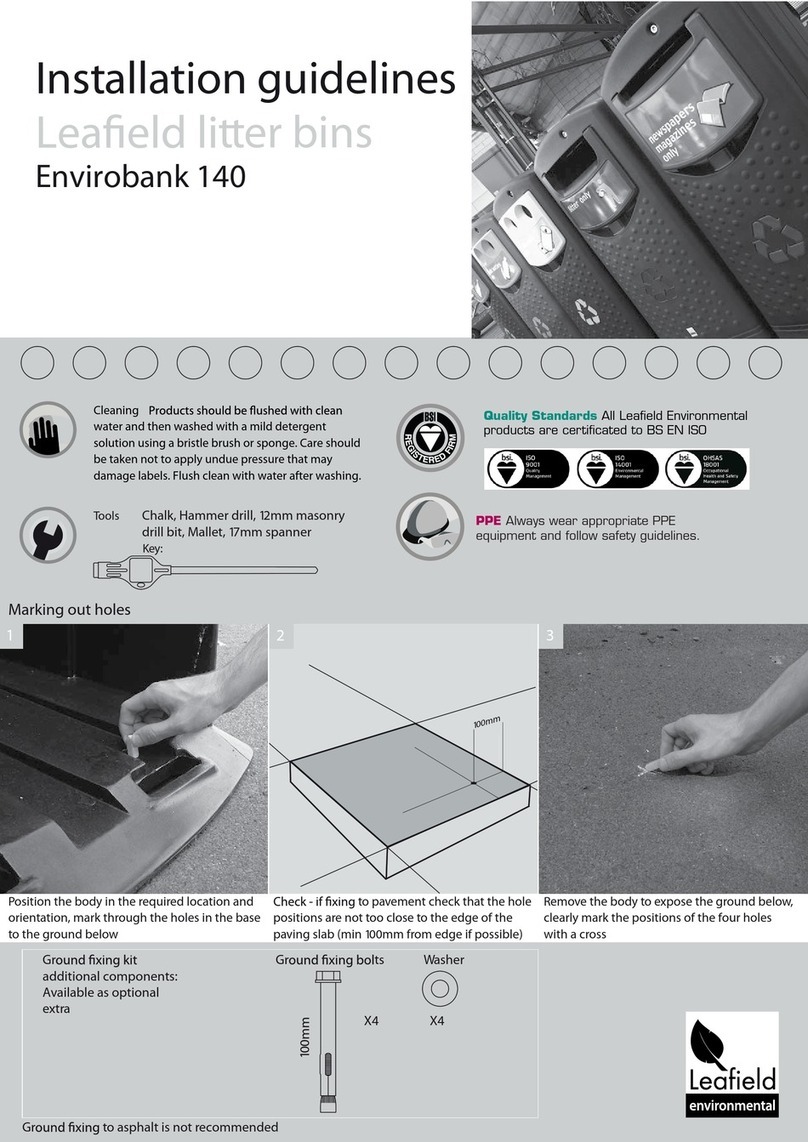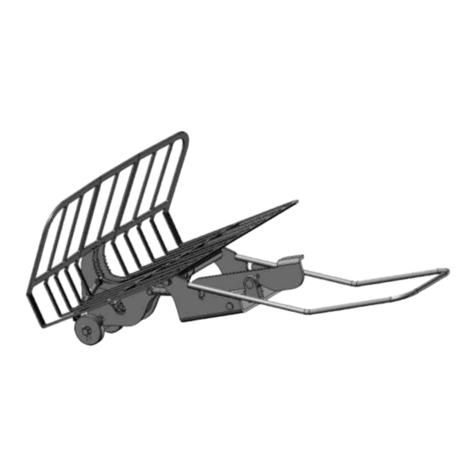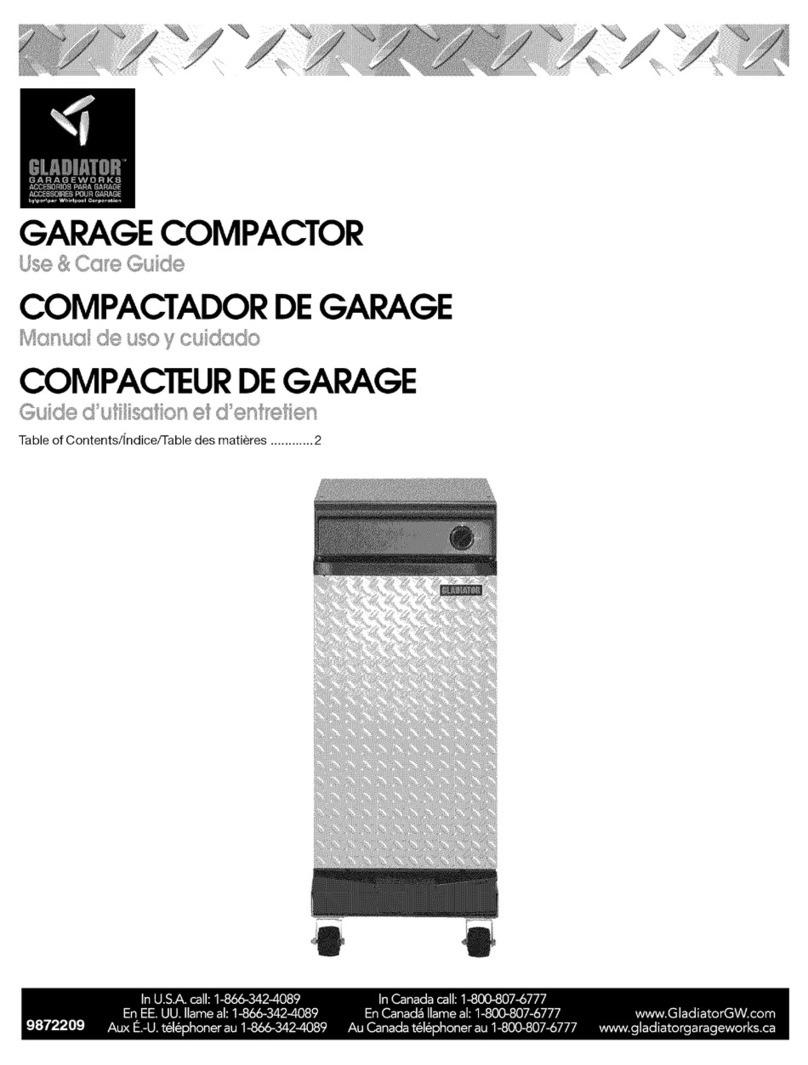
(Picture10.2)
10. Connect Disposer to Electrical Supply(10.1)
Warning Electrical shock
·To avoid electrical shock, disconnect power before
installation or servicing disposer.
·If you are not thoroughly familiar with electrical power,
contact a qualified electrician to connect disposer to
electrical circuit.
·If three-prong, earth plug is used, plug must be
inserted into three hole, earth receptacle.
·All wiring must comply with local electrical codes.
·Do not attach earth wire to gas supply pipe.
·If the supply cord is damaged, it must be replaced
by the manufacturer, its service agent or similar qualified persons in order to avoid
hazard.
Note:You must have access to an earth wall socket. Any additional socket should
befitted by a qualified electrician and properly earthed. The disposer is fitted with a
molded plug and cable.
11.Important Safety Instructions
Warning!
When using electrical appliances, basic precautions are always to be followed,
including:
1. If the air switch or wall switch fails to shut off or turn on disposer, unplug the
power cord and contact your qualified trade person.
2. This product is designed to dispose of normal household food waste, inserting
materials other than food waste into the disposer could cause personal injury and/or
property damage. To reduce the risk of injury, do not use the sink containing the
disposer for purposes other than food preparation (such as baby bathing or wash hair)
0807
1. Place metal flange over discharge tube. Insert rubber gasket with gasket lip
facing the metal flange into discharge tube.
2. Secure metal flange and discharge tube to disposer
with bolts.
3. Rotate disposer so that discharge tube is aligned
with drain trap. ( To prevent leaks, do not pull or bend
discharge tube to drain trap.) If discharge tube is too short,
you can purchase an extension from hardware store.
4. Place nut, then ferrule on discharge tube and tighten
on drain trap. (If you have a double sink, use separate drain
traps for both sides of sink.)
Ensure lower mounting ring is still securely locked over
ridges on mounting flange. (Picture9.1)
(Picture10.1)
(图10.3)
(图10.4)
Food Waste Disposer Users’ Manual Food Waste Disposer Users’ Manual
On/off Control
There are two types of controls for continuous-feed disposers: a double pole switch
and an air switch.
◎Double Pole Switch
If an wall switch (not supplied) is required for your installation,
it must have on/off markings and be installed by a qualified
tradeperson. It should be located in a convenient position above
the work surface with minimum of 3mm contact separation between
each pole. Connect to a 20 amp earth wall socket using a 20 amp
cable.(Picture 10.2)
◎Air Switch:
Air switch is included with each disposer. An air switch
activates/turns off the unit by sending a pulse of air to the
control box.
◎Air Switch Installation
1. Drill a 33mm wide hole into the kitchen work top, or the
corner of the sink unit, at the most convenient point for use. Some
sink units may already have a suitable hole in them which can be
exposed by removing the cap.
2. Remove the nut from the push button below, while keeping
the rubber gasket in place. Push one end of the PVC tubing onto
the spout of the push button bellows, feed the other end of the tube
through the hole in the work top and through the nut underneath the
work top. (Picture 10.3)
3. Fit the Push button bellows in the hole and then screw up the nut
underneath the work top until it is hand tight. ( Do not use a wrench
to tighten the nut. )( Picture10.3)
4. Take the other end of the air tube and firmly push it over the spout of the air
switch, which is located on the underside of the waste disposer. (Note: for B series DC
model, C series and D series, the spout is located at the side of disposer)(Picture 10.4
)
◎Disable Air Switch
The air switch can be disabled if wall switch is preferred.
The disposer is shipped with the switch in the “off” position.
1. Push one end of the PVC tubing provided onto the spout of the push button bellows.
2. Take the other end of the air tube and push it over the spout of air switch, which
is located at the bottom of the disposer unit. (Note: for B series DC model, C series DC
model and D series DC model, the spout is located at the side of disposer unit.)
3. Dpress the air switch one time until you hear the switch “click.” Remove and
discard the push button and PVC tubing. The disposer may now be activated by a wall
switch.
The disposer installation is complete. Read all operation and safety instructions in
instruction 11 before operating the disposer. Lastly, place stopper in sink to close
position. Fill sink with water, remove the stopper, turn the disposer on and check for
leaks.
